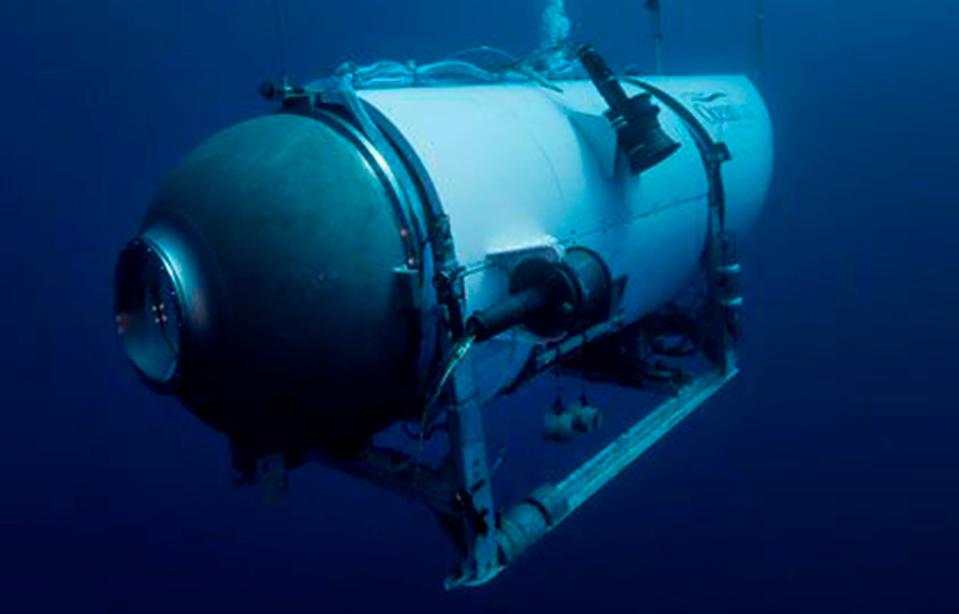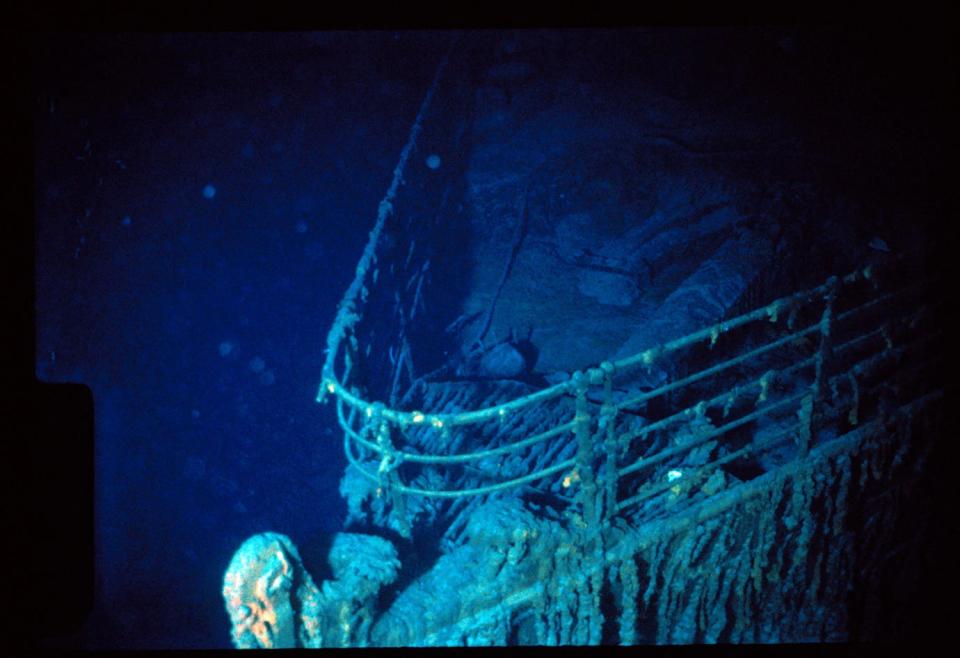Missing Titanic tourist submarine running out of oxygen: What we know
U.S. and Canadian rescue teams were racing against time Tuesday to locate a submersible carrying five people to the wreckage site of the Titanic after the submarine vanished in the North Atlantic Ocean two days earlier.
The carbon-fiber submersible named the Titan had a 96-hour oxygen supply when it went out to sea at about 6 a.m. Sunday, according to David Concannon, an adviser to OceanGate Expeditions, the deep-sea exploration company that owns the vessel.
Onboard the submersible were a pilot, a renowned British adventurer, two members of an iconic Pakistani business family and a Titanic expert. The vessel was reported overdue Sunday night about 435 miles south of St. John’s, Newfoundland, according to Canada’s Joint Rescue Coordination Center.
The Canadian research icebreaker Polar Prince, which was supporting the Titan, reportedly lost contact with the vessel about an hour and 45 minutes after it submerged.
“It is a remote area – and it is a challenge to conduct a search in that remote area,” said Rear Adm. John Mauger, a commander for the U.S. Coast Guard, which also is searching for the Titan.
Mauger on Sunday said the submersible has a 96-hour emergency sustainment capability, which would include oxygen and fuel. "So we anticipate that there's somewhere between 70 and the full 96 hours available at this point,'' he said.
Mauger told NBC’s “Today” show on Tuesday that his crews were working to prioritize underwater search efforts and get equipment there.
Experts told the Associated Press that the challenges were difficult.
Alistair Greig, a professor of marine engineering at University College London, said submersibles typically have a drop weight, which is “a mass they can release in the case of an emergency to bring them up to the surface using buoyancy.” A power failure would leave the vessel "bobbing" on the surface, he said.
There could also be a leak in the pressure hull, he said.
“If it has gone down to the seabed and can’t get back up under its own power, options are very limited,” Greig said. “While the submersible might still be intact, if it is beyond the continental shelf, there are very few vessels that can get that deep, and certainly not divers.”
Where is the search area for the Titan submersible?
The U.S. Coast Guard in Boston is leading the search for the small craft, combing below the water and on the ocean's surface, using tools ranging from sonar technology to aircraft.
The operation's location − about 900 miles east of Cape Cod and up to 13,000 feet deep − complicates the task, as does the need to look both on the surface of the water and below, the Coast Guard said.

"We are deploying all available assets to make sure that we can locate the craft and rescue the people on board," Mauger said.
The Coast Guard said in an update Tuesday morning that crews had searched about 10,000 for the submersible so far. A Canadian maritime patrol aircraft had also arrived to conduct sonar searches, the Coast Guard said.
When did the Titanic tourist submarine go missing? What is the oxygen supply?
The craft embarked and went under the water Sunday morning, but its support vessel lost contact with it about an hour and 45 minutes later, according to the Coast Guard.
The craft went missing in the North Atlantic Ocean, the remote area where the massive oceanliner the Titanic struck an iceberg and sank in 1912, killing all but about 700 of the roughly 2,200 passengers and crew.
The Titan was being launched from an icebreaker that was hired by OceanGate and formerly operated by the Canadian Coast Guard. The ship ferried dozens of people and the submersible craft to the North Atlantic wreck site, where the Titan makes multiple dives.
Mauger on Sunday said the submersible has a 96-hour emergency sustainment capability, which would include oxygen and fuel. "So we anticipate that there's somewhere between 70 and the full 96 hours available at this point,'' he said.

Where is the wreckage of the Titanic?
This was OceanGate Expedition's third annual voyage to the Titanic since 2021. The sunken ship is about 2.4 miles below the surface. The Washington-based deep-sea exploration company has taken archaeologists and marine biologists to the site of the Titanic wreckage.
Who was on board the OceanGate expedition submersible?
The Coast Guard said there was one pilot and four “mission specialists” aboard. “Mission specialists” are people who pay to come along on OceanGate’s expeditions. They take turns operating sonar equipment and performing other tasks in the five-person submersible.
An initial group of tourists in 2021 paid $100,000 to $150,000 apiece to go on the trip. OceanGate’s website described the “mission support fee” for the 2023 expedition as $250,000 a person.
British businessman Hamish Harding, who lives in Dubai in the United Arab Emirates, was one of the mission specialists, according to Action Aviation, a company for which Harding serves as chairman.
Harding is an adventurer who holds three Guinness World Records, including the longest duration at full ocean depth by a crewed vessel. In March 2021, he and ocean explorer Victor Vescovo dived to the lowest depth of the Mariana Trench. In June 2022, he went into space on Blue Origin’s New Shepard rocket.
Shahzada Dawood and his son Suleman, members of one of Pakistan's most prominent families, were also on board, according to a family statement sent to the AP. The family is known for investments in agriculture, industry and the health sector. Shahzada Dawood also is on the board of trustees for the California-based SETI Institute that searches for extraterrestrial intelligence.
What is a submersible?
A submersible is a vessel in the submarine family but smaller and less self-sufficient than the classic military sub.
Contributing: Jorge L. Ortiz, Francisco Guzman, Donovan Slack, USA TODAY; Associated Press
This article originally appeared on USA TODAY: Missing Titanic tourist submarine running out of oxygen: What we know

